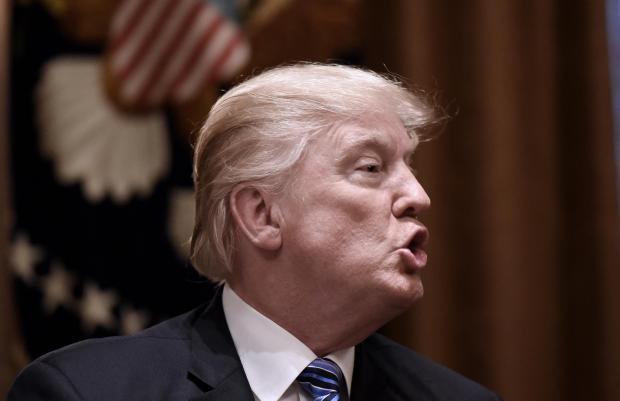
President Trump
President Donald Trump’s escalating attacks on the media have disturbed and unnerved politicians, commentators and citizens across the political spectrum – and they have unleashed a national dialogue on free speech and its limits.
Those attacks seemed to reach a crescendo with Saturday’s scathing denunciation of the media for its efforts to “silence” him and his followers. “The fake media,” he said, “is trying to silence us. But we will not let them. Because the people know the truth. The fake media tried to stop us from going to the White House. But I’m president and they’re not.” The supposed truth that Trump hopes people know is that they cannot trust the media.
Saturday’s condemnation, coming on the heels of last week’s tactless Twitter attack on MSNBC’s Mika Brzezinski, turned out only to be a prelude to what followed. On Sunday, the president tweeted what appears to be an edited version of his 2007 WrestleMania appearance, where Trump “attacked” wrestling icon Vince McMahon. Trump is shown, just outside the ring, body slamming and getting on top of a man whom he repeatedly punches. The CNN logo is superimposed on the face of his victim. Lest anyone miss his point, the president’s tweet included the words ”#FraudNewsCNN #FNN.”
Commentators quickly reacted. ABC’s Matthew Dowd claimed Trump is “advocating violence against media.” CNN’s Ana Navarro denounced the tweet as “an incitement to violence.” She warned that the president is “going to get somebody killed in the media.”
But does the president’s video pose a clear and present danger? And if so, to whom – to specific persons, or to democracy itself?
Since the start of his presidential campaign and through the first months of his term in the Oval Office, Trump has shown himself to be a free speech radical, playing against, as well as within, conventional understandings of the First Amendment. His speech is frequently tasteless and intentionally offensive, and Sunday’s tweet is certainly both – and, as the commentators warned, potentially harmful.
But, as the distinguished political philosopher George Kateb noted, even “worthless or harmful” speech is, and should be, protected by the First Amendment. Moreover, the video posted on Sunday is not incitement in the legal sense of that term. The Supreme Court has said that the government may only prohibit the advocacy of violence when such advocacy is intended to produce “imminent lawless action and is likely to produce such action.”
While the president likely knows little about constitutional interpretation, he once again displayed his considerable skill in showmanship. He artfully staged his attack against the background of an event which is, as the president himself loves to say, fake: WrestleMania is entertainment based on the performance of violence, rather than an actual violent fight. This fact, no doubt, would help Trump defend himself, if his tweet in fact precipitates violence against a reporter.
Still, it reveals plainly the nature of the president’s fantasies about what should be done to journalists who oppose him, even if it does not reveal a plan to carry out a physical assault. The video is inspired by the violent control over media critics exercised by authoritarian leaders like Russian President Vladimir Putin (surely one reason Trump so admires him).
It also exposes the deep hypocrisy of what the president said after the shooting of Majority Whip Rep. Steve Scalise and others mere weeks ago: “We are strongest when we are unified and when we work for the common good,” he said.
Trump has never been a voice for unity. Sunday’s tweet reminds us all too well of the president’s history of calling for violence against those who protested at his campaign rallies. In one instance, he proclaimed that he would “beat the crap” out of a protester. In another, he praised people using physical force at his rallies as “appropriate.” In still another, he spoke glowingly about times when a protester would “be carried out on a stretcher.”
Trump’s defenders will say that such rhetoric was all in the past, or that the video is a distraction, perhaps an amusing parody. Or they will want us to believe what deputy press secretary Sarah Huckabee Sanders said on Thursday: “The president in no way form or fashion has ever promoted or encouraged violence. If anything, quite the contrary.”
Even if Americans were to ignore what Trump said repeatedly during the campaign and give credence to Sanders’ assertion, no one can have confidence that all of the video’s viewers will understand the distinction between the real and the staged, the fantasy and the reality. To protect reporters and the press – which Trump has likened to “the enemy of the people” – news outlets that hold credibility with the president’s most fervent supporters must now show what Kateb called “civil courage” and denounce Trump’s latest outrage.
Let them rise to the defense of their fellow journalists. Let them, as CNN has promised, do their job.The danger to freedom of the press is real, and the danger to democracy is undeniable. We should be weary of those who pretend that Trump’s tweets and the video are all just for show.
Previously published by USNews, July 3, 2017
